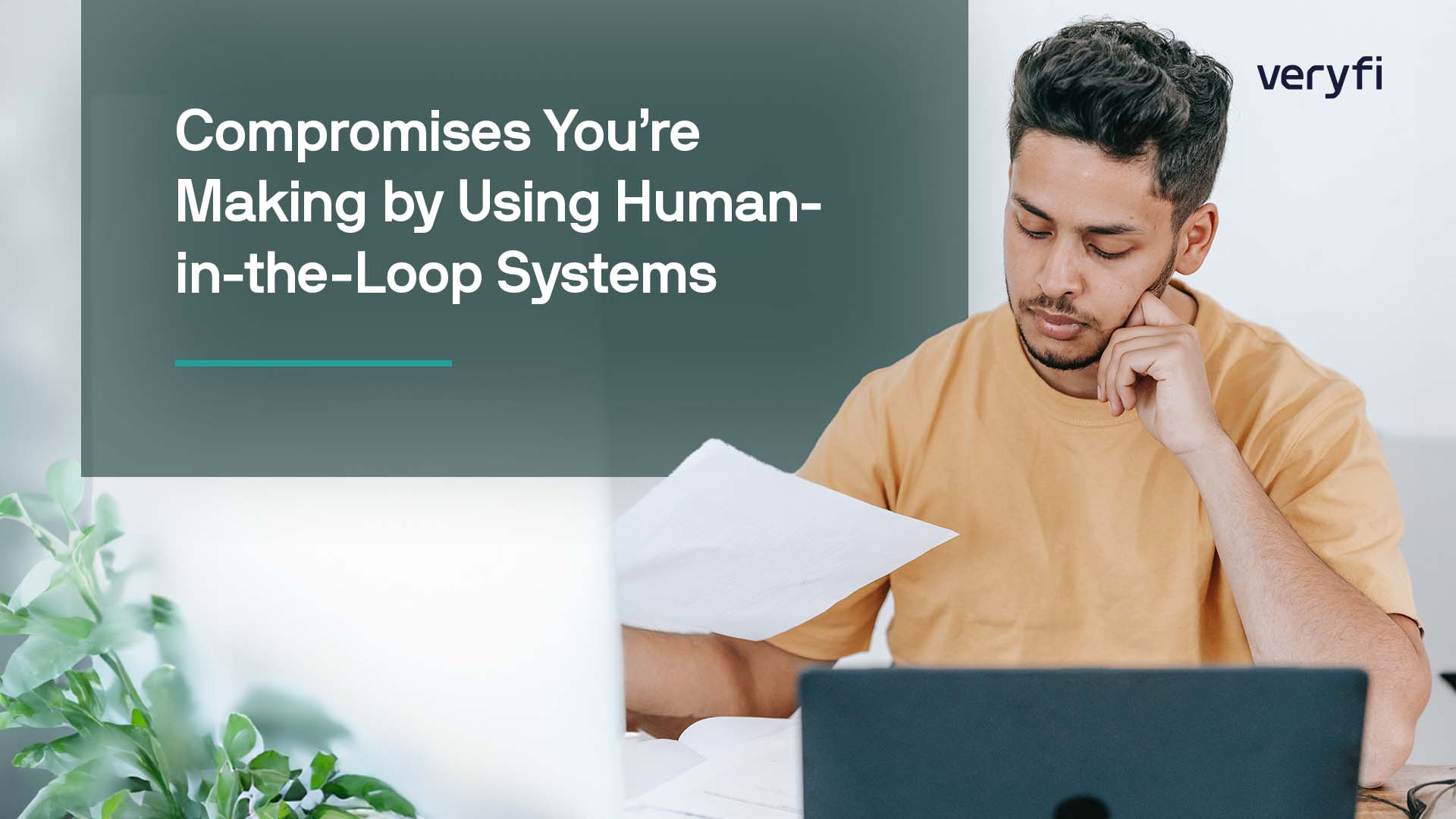In the world of data extraction, Human-in-the-Loop (HITL) OCR have long been hailed as a solution to complex data processing tasks. However, despite their initial promise, these systems come with inherent limitations that make them ultimately unscalable and downright dangerous. Here are three top reasons why Veryfi customers ditched human-in-the-loop OCR for Veryfi’s AI-powered OCR solution:
1. Human-in-the-Loop OCR causes human error and fatigue
One of the primary challenges of HITL systems is the reliance on human input. While humans are capable of incredible cognitive feats, they are also prone to error and fatigue. As the volume of data increases, so does the likelihood of mistakes. Even the most diligent human operators can only process so much data accurately before fatigue sets in, leading to decreased efficiency and reliability. Imagine a data analyst working tirelessly to extract information from a mountain of financial documents. Initially, their focus is sharp, and their accuracy is high. However, as the hours pass and the workload grows, fatigue sets in. The analyst begins to make more mistakes, slowing down the extraction process and reducing the overall quality of the data. This common scenario is detrimental for doing complex operations such as managing money and processing insurance claims. To effectively manage finances and process insurance claims, information extraction must be highly accurate to enable these processes to be performed seamlessly while also detecting fraud.
2. Human-in-the-Loop OCR inhibits data scalability
Another significant limitation of HITL OCR is their limited scalability. While humans can handle complex tasks that are beyond the capabilities of automated systems, they are not easily scalable. Hiring more human operators may seem like a simple solution, but it quickly becomes impractical and cost-prohibitive as the volume of data increases. Additionally, training new operators to the required level of proficiency takes time and resources, further limiting scalability. Imagine a company facing a sudden surge in data that needs to be extracted. While they could hire more human operators to handle the workload, doing so would require significant time and resources to train them to the required level of proficiency. This lack of scalability makes it challenging for HITL OCR to keep up with rapidly changing data processing needs. In fact, Veryfi customer Thanx eliminated the need for their team of over ten humans-in-the-loop by replacing that team with Veryfi OCR software. Now imagine how you could scale your data, extraction, and product matching (which hinges upon accurate extraction) to work more diligently for you. Check out this video comparing human data entry to machine data entry, featuring Intuit Quickbooks.
3. Human-in-the-Loop OCR produces high costs and revenue losses
Finally, HITL systems are often times 10 times the cost of OCR software. Employing real people to read data requires market-rate salaries. That is expensive. The cost of employing skilled human operators, combined with the resources required to train and manage them, can quickly add up. As the volume of data increases, so do the costs, making HITL OCR unsustainable in the long run. Imagine a company that relies on humans-in-the-loop to extract data from its documents. Initially, the cost may seem manageable. However, as the volume of documents grows, so do the costs associated with employing human operators. Eventually, the cost becomes unsustainable, forcing the company to seek alternative solutions. Lastly, the opportunity costs of not leveraging data automation via AI-powered OCR are monumental. Check out Veryfi’s free online OCR toolbox, and you can see why incorrect extraction on your bank statements, invoices, W2s, and more would create negative consequences.
While Human-in-the-Loop (HITL) systems have their place in data extraction, they are ultimately unscalable due to human error and fatigue, limited scalability, and high cost. As the volume of data continues to grow, organizations must look for more scalable and cost-effective solutions to meet their data processing needs. Veryfi OCR API is a boutique solution trained on billions of documents over the course of years, bringing you near 100% accurate and 120% continuously improving data extraction software.
If you are interested in how the Veryfi Insights team analyzed our findings, check out our receipt OCR API for real-time, non-HITL data extraction or get a demo from our team and see the mobile receipt capture app in action. You can also take a self-guided tour with your own free account!
